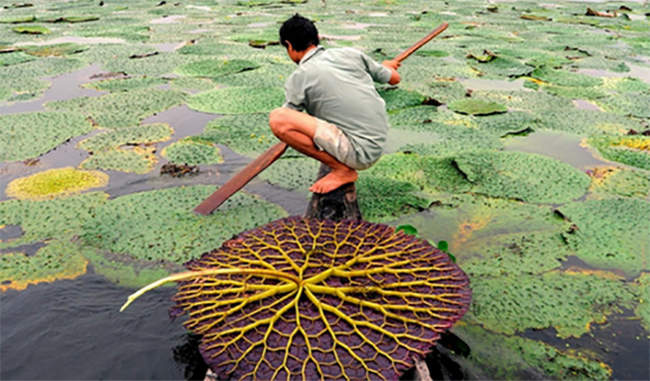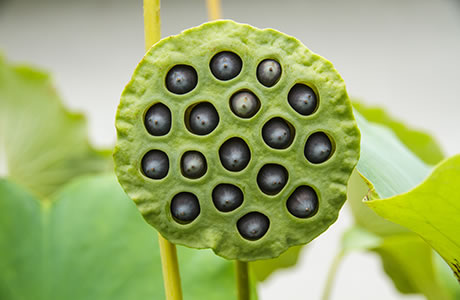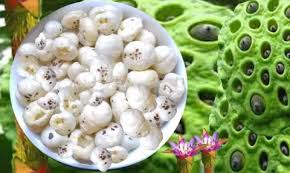Makhana or phool makhana are basically roasted and popped seeds of Fox nuts or lotus seed. It is also known as gorgon nuts in many countries such as Korea, Japan & Russia etc. Fox nuts seed or gorgon nuts are belong to an aquatic flowering plant or crop called Euryale Ferox salisb which mainly grown in stagnant water of wetland or shallow water bodies, ponds, tanks, lakes & ditches etc that must have a certain amount of organic detritus accumulated at the bottom.
The makhana fruit is very rich in Phosphorus, Potassium, Iron, Calcium, Magnesium and amino. It is highly nutritious food that has been used as a snack all over and also used in different recipes especially in Indian cuisines. The importance of this crop is increasing day-by-day due to its high carbohydrate and protein, and low fat content, and also due to its religious offerings.
Is there any difference between Fox seed & Lotus seed as makhana is obtain from both seeds/nuts?
Makhana is obtain from both Fox nut seed & Lotus seed as both are an aquatic flowering plant but basic difference is that Fox nuts belong to Euryale Ferox salib family whereas Lotus seed belong to genus Nelumbo family. In large scale or commercial production of Makhana is mainly obtain from Fox nuts whereas in smaller quantity it is obtain from lotus nuts. Fox nut seed mainly cultivated in large scale in North Bihar whereas Lotus seed are cultivated mainly in J&k, west bengal & North east states etc in smaller scale.
The basic difference is that Fox seeds have hard outer crust which is usually black in color where as Lotus seed does not have very hard outer covering. The color of dried lotus seed is yellowish brown color but many of the seller also bleach its dried seed to make it off white color. The kernel of the lotus seed in off white in color.
Picture of Lotus seed & its Kernel


The lotus seeds are harvested when the seed head is fully ripe. Brown peel lotus seeds are brown because the ripened seed has adhered to its membrane. They need to be soaked overnight before consumption, due to the hard textured shell. Lotus seeds are easy to store in their dried form- use plastic containers and store in a cool dry place.
How fox nuts plant looks like:-
This aquatic flowering plant (Euryale Ferox salisb) has a floating leaves but does not bear any stem. Its rootstalk are short, thick & fibrous consisting 3 to 5 clusters. The full grown leaves are corrugated & deep green in color from the above side but pink or deep purple in color from bottom side of the leaves. The approx. length of leaves are usually 1 to 1.5 metre in diameter whereas its flower violet-blue or dark pink in color.

Pic source-prabhasakshi
About Flower &its seeds: –
Each plant cultivated 15-20 fruits which are round and spongy and prickly from outside. Each fruits carry 20-25nos of seeds which are small(hardly 0.75cm in diameter)& black in color. The seed have hard outer covering around the white edible part. Its seed having hard black coating and a mucilaginous aril. The pulpy aril keeps the seeds floating for a few days after they start settling down the bottom of the ponds.
Indian council of Agricultural research (ICAR) has recently developed high-yield makhana seed or fox nut seed called “Swarnavaidehi” which is commercially rich crop


Pic source-check your food & Flickr
Cultivation of Fox nuts in India:-
Makahana plan is considered as a native to south east Asian & east Asian countries such as Japan, china, korea, Russia, Nepal, Bangladesh & India.
Since it is an aquatic cash crop in India and mainly grown in the tropical climate naturally or wildly in various part of north Indian state like J&K, Bihar, West Bengal, Assam, Manipur, Tripura, Meghalaya, Orissa, M.P and some part of Uttar Pradesh such as Gorakhpur. But commercially it is mainly cultivated in North Bihar specially in Mithilanchal district area where more than 80% of total cultivation in India is cultivated in these district alone.
It is a seasonal annual crop which dies out after its fruit matures. Its plant mainly grow in wetland of standing shallow water which should have minimum 2.5 mtr depth. It require 25-35degree C temperature and humidity between 50%-90% and average rain fall 100-250cm.
Commercial cultivation of Makhana from Fox nuts in North Bihar (Mithilanchal District)
It is commercially grown mainly in North Bihar in the Mithilanchal district area. There are 09 district in North bihar where makhana are mainly cultivated which are:-Darbhanga, Madhubani, Purnia, Katihar, samistipur, supaul, araria & Kishanganj. Approx 80% of total production of processed makhana comes from these mithilanchal district area.
- Indian council of Agricultural research (ICAR) has recently developed high-yield makhana seed or fox nut seed called “Swarnavaidehi” which is commercially rich crop are mainly commercially cultivated in Mithilanchal district of North Bihar. This high yield crop variety of makhana has a yield potential of 2.8-3.0 tones per hectare as compared to 1.6 tones per hectare from traditional makhana seed.
- Around 80% of its total production in India comes from North Bihar Mithilanchal district which includes-Darbhanga, Madhubani,Katihar and purnia district alone where it is cultivated in more than 15000 hectare of wetland or ponds.
- The Government of Bihar has set a target to extend the cultivation of makhana from present 15000 hectare in 2018 to 20,000 hectare by the end of year 2020, adopting the field based makhana cultivation technology. About five lakh families are directly involved in makhana cultivation, its harvesting, popping, and produce selling, etc.
